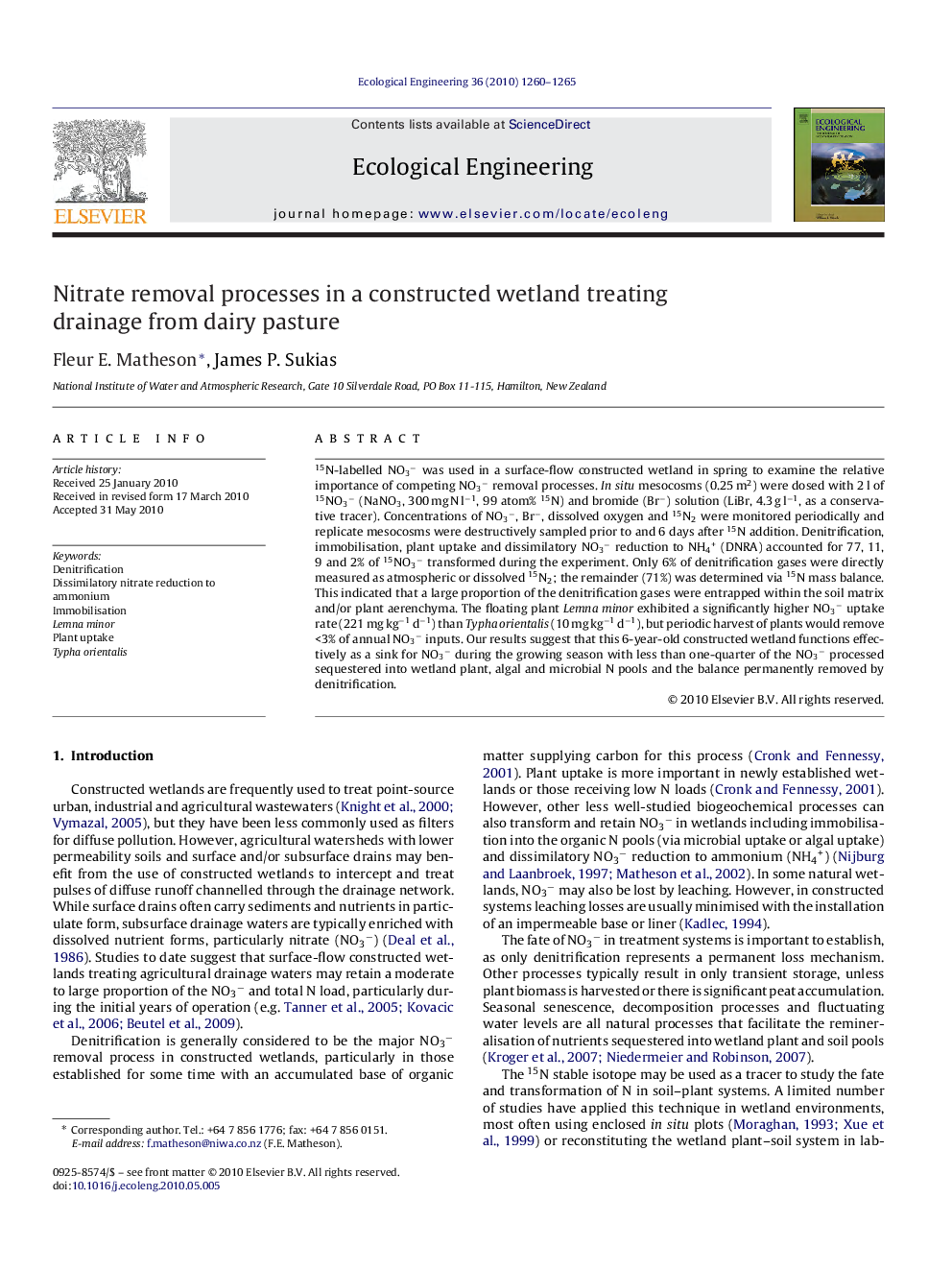| Article ID | Journal | Published Year | Pages | File Type |
|---|---|---|---|---|
| 4390572 | Ecological Engineering | 2010 | 6 Pages |
15N-labelled NO3− was used in a surface-flow constructed wetland in spring to examine the relative importance of competing NO3− removal processes. In situ mesocosms (0.25 m2) were dosed with 2 l of 15NO3− (NaNO3, 300 mg N l−1, 99 atom% 15N) and bromide (Br−) solution (LiBr, 4.3 g l−1, as a conservative tracer). Concentrations of NO3−, Br−, dissolved oxygen and 15N2 were monitored periodically and replicate mesocosms were destructively sampled prior to and 6 days after 15N addition. Denitrification, immobilisation, plant uptake and dissimilatory NO3− reduction to NH4+ (DNRA) accounted for 77, 11, 9 and 2% of 15NO3− transformed during the experiment. Only 6% of denitrification gases were directly measured as atmospheric or dissolved 15N2; the remainder (71%) was determined via 15N mass balance. This indicated that a large proportion of the denitrification gases were entrapped within the soil matrix and/or plant aerenchyma. The floating plant Lemna minor exhibited a significantly higher NO3− uptake rate (221 mg kg−1 d−1) than Typha orientalis (10 mg kg−1 d−1), but periodic harvest of plants would remove <3% of annual NO3− inputs. Our results suggest that this 6-year-old constructed wetland functions effectively as a sink for NO3− during the growing season with less than one-quarter of the NO3− processed sequestered into wetland plant, algal and microbial N pools and the balance permanently removed by denitrification.
